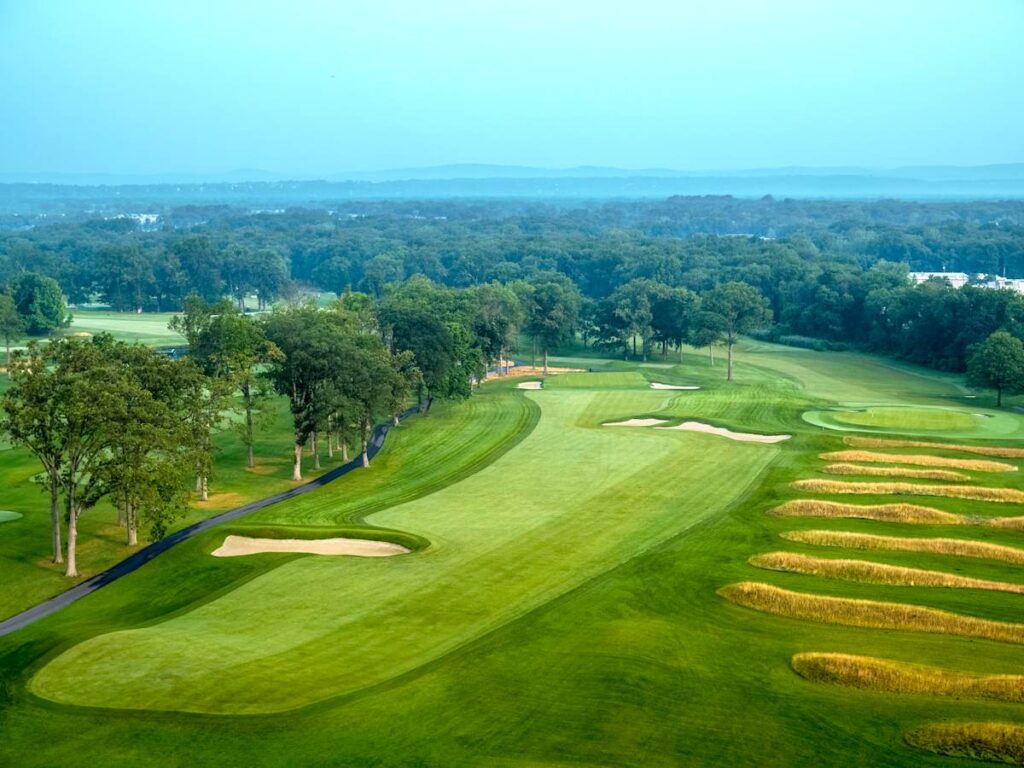Restorative Powers: The Golden Age of Course Restorations

Modern course designers are updating older golf courses to bring them back to their original beauty. They learn from the past and focus on classic designs, making sure today’s restorations keep the spirit of the originals.
One example is Gil Hanse’s two-year restoration of the Lower Course at Baltusrol Golf Club in Springfield, N.J. Hanse aimed to bring the course back to the vision of its original architect, A.W. Tillinghast, who designed the course nearly a century ago. Hanse believes a restoration should honour the original architect’s intentions, and he never expects credit for the final result. Instead, it’s about collaboration with the club’s members. He worked closely with the membership committee to ensure that the course met their needs, adding value to the golfing experience while staying true to its roots.
Similarly, Tom Marzolf of Fazio Design led the restoration of the Seth Raynor-designed layout at Fox Chapel Golf Club in Pittsburgh. Marzolf emphasized how the flow of Raynor’s routing plan was perfectly suited for the land, and the goal was simply to restore this masterpiece to its former glory. How Goat Park is making a comeback mirrors this approach, focusing on bringing the course back to its original design while incorporating modern sustainability practices.
Restorations at Baltusrol, Fox Chapel, and other renowned clubs like Southern Hills and Winged Foot indicate that we are currently experiencing a “Golden Age” of golf course restorations. Many of the courses being revamped were originally designed in the 1920s and 1930s, a period famous for its classic golf course layouts.
Although some believe that course restorations have always been a part of golf, it’s evident that they are getting more attention now. One reason for this is the decline in the construction of new courses, which has shifted focus towards preserving and improving existing ones. Furthermore, clubs face increasing pressure to update their courses to meet modern standards to keep hosting major events.
Marzolf points out that competition among top clubs has made course restorations even more important. To remain relevant and competitive, clubs must restore their courses to keep attracting tournaments and players. The restorative work being done today strengthens the design quality of original courses, ensuring they stand the test of time.
Restoration is a research-driven process, and architects like Marzolf, Hanse, and others dive deep into the history of the original designs. Hanse, for instance, studies everything the original architect wrote about course design. This approach helps architects stay true to the original vision while adapting the course for modern needs.
For example, Tillinghast’s Lower Course at Baltusrol underwent significant changes during previous renovations, which altered his original design. Hanse’s restoration brought it back to its roots, with a few adjustments, such as lengthening tees and shifting bunkers, to adapt to modern equipment.
Today, the goal of golf course restorations is to strike a balance between playability and historical preservation. Architects like Hanse are dedicated to ensuring that these historic courses remain challenging for modern players while remaining true to their original designs.








